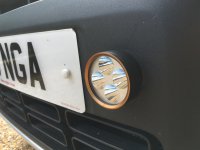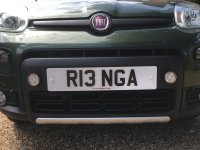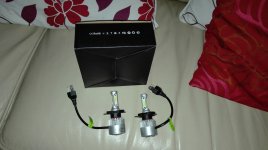I don't disagree! Trouble is, an insurance company (yours or that of someone else we may be unfortunate enough to bump into) will look for any excuse to not pay up. That's why I try and stay within the rules with lights, tyres and so on where possible. I have Halfords 130% brighter lights and for most of my driving they are fine (on road, off road, motorways or country lanes) The only time the seem 'poor' is after driving my Volvo around, with its Bi-xenons and 'active bending lights' (which means the beams turn with the steering, like the old Citroen DSs did)Hi.
Yes I am aware of the law with self levelling and washers. ...
So at times I get frustrated with regulations, these regulations and the law about aftermarket bulbs need to be carefully examined along with innovations from the likes of Philips,...
In time, the rules will catch up with the technology...




